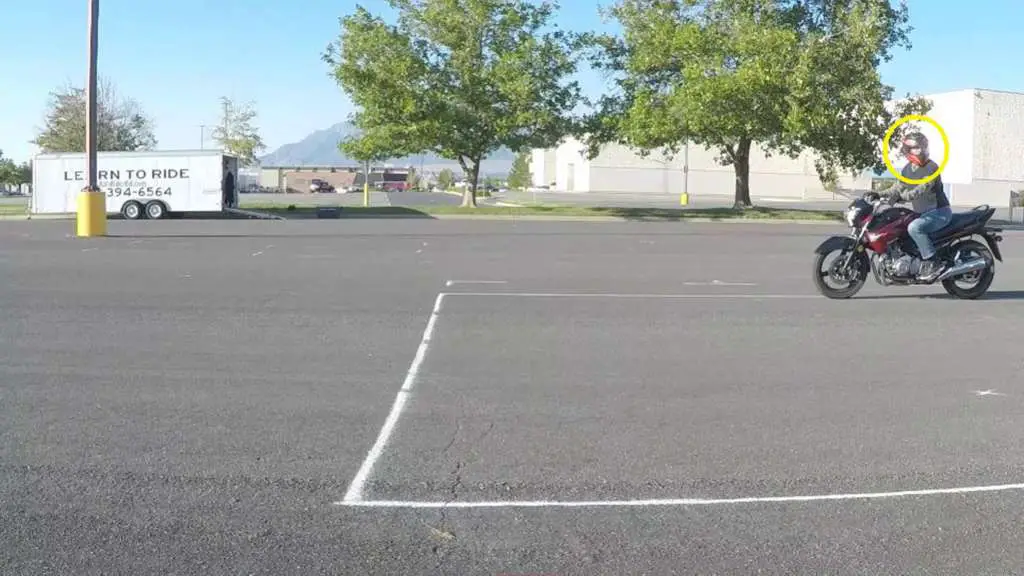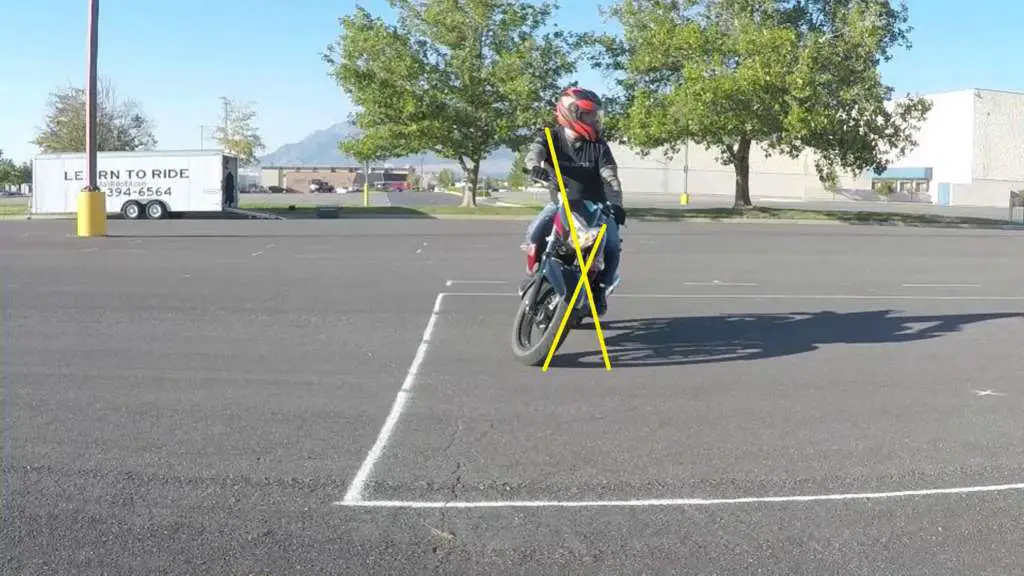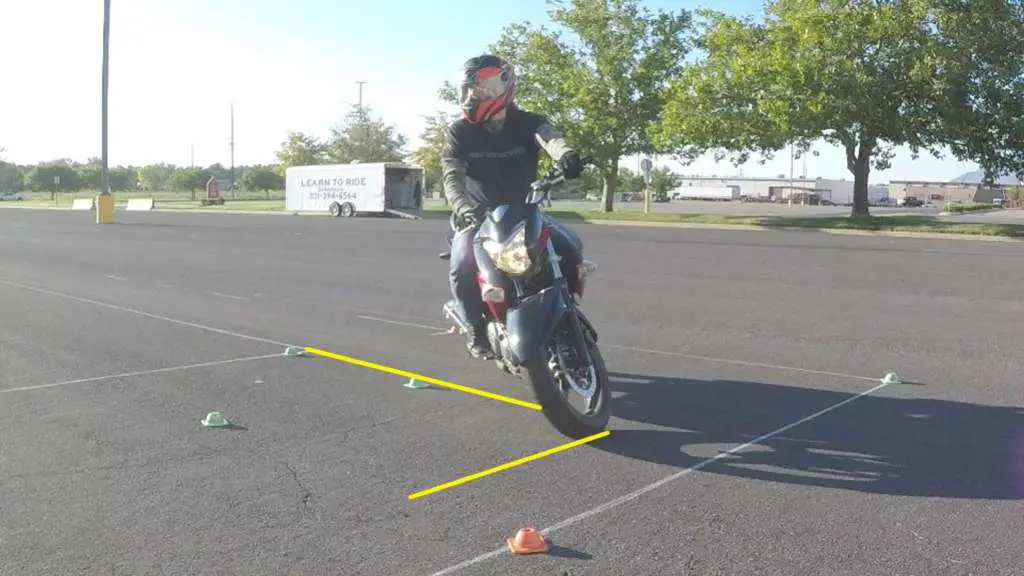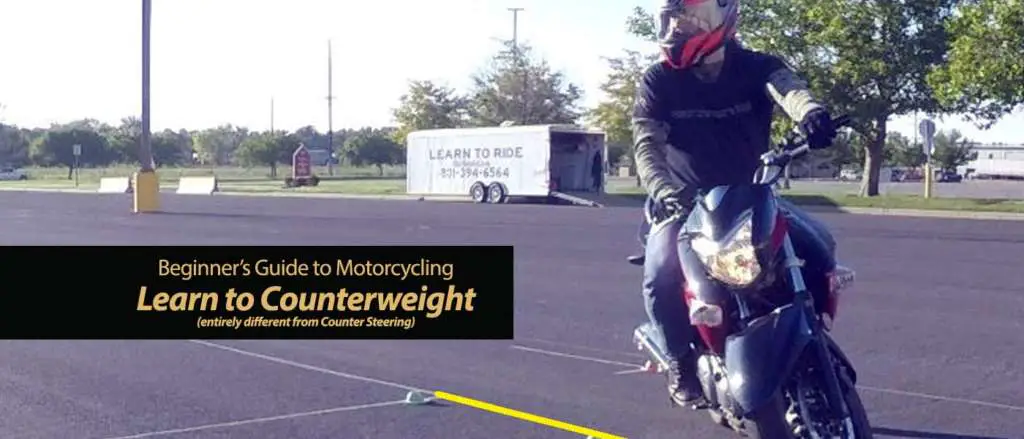
COUNTERWEIGHTING: Tight Turns, Tight Skills.
One of the best tools in a motorcyclists’ arsenal is the low-speed maneuver known as counterweighting. This technique can help you manage your bike in small spaces like parking lots or driveways, and keep you safe and precise when turning at intersections. Best of all, it’s easy to learn. Read on to learn how to apply this skill to your riding. Total Motorcycle Beginner’s Guide to Motorcycling is your best resource to learn and improve your riding skills.
WRONG RIGHTS
It was a video shared in one of my Facebook groups that prompted me to write this article.
In the video, we see a divided highway with a grassy median, two lanes of travel in both directions. The camera is facing up the road towards a T intersection, where a procession of bikes is queued up to make a right turn. A lead rider rolls out to block traffic, as they do, and some fifty bikes make the right turn and ride down the road towards the camera. They wave as they pass.
What strikes me about the video is not the huge procession of bikes. It is not the bikes themselves, how majestic or impressive they look. It is not even the questionable practice of a citizen blocking traffic, which really ought to be done by a police escort. No, the thing about the video that stuns me is the right turn. Some four of ten bikes completely blow the corner, passing a foot or more into the further lane. Four in ten of these riders can’t complete a 90 degree right turn with a 10’ radius. I wonder what they do when they’re out riding on their own, without a blocker.
“In the same way that leaning our body into a turn can help us take it faster, leaning out of a turn can help us take it slower. We call this counterweighting.”
EXCUSES
It’s not their fault. I don’t think they’re poor or inattentive riders. I just think they’re struggling under a handful of incorrect stories motorcyclists sometimes tell themselves. It starts with ‘my bike is too big for tight turns’, and ends with ‘just don’t park where you can’t get out.’ Lots of stops in-between. For whatever reason, low-speed maneuvers in tight spaces tend to be dismissed as either unnecessary or too difficult. Fortunately, we don’t have to keep laboring under these false notions. There are situations where a poorly executed TFS (turn from stop) can get you hurt, so it’s a necessary skill to learn. There is an easy, effective technique to help you master them, so it’s not too difficult. And this technique works with any size bike.
It’s called…
COUNTERWEIGHTING*
*-not to be confused with countersteering, an entirely different technique for an entirely different situation
In the same way that leaning our body into a turn can help us take it faster, leaning out of a turn can help us take it slower. We call this counterweighting, and it can be effective both while moving and from a standstill. Please note that counterweighting is only appropriate at very low speeds, from a crawl to about 8mph. Anything faster than that and you want to use your normal cornering technique, which should be countersteer.
COUNTERWEIGHTING WHILE ROLLING
As you approach a turn, you want to first create some slack in your elbows by leaning forward at the waist. This will give you the extra reach you’ll need. Next is the head turn. This is vital. Your bike will go where your chin is pointing, so point it where you want to go. And point it all the way. If you intend to turn all the way around, turn your head all the way around. Look where you intend to be when the turn is complete.

So now we’re leaned forward, and our head is turned in the direction we want to go. Start to turn your bars (not lean them, we turn the bars at low speeds), and as you do, lean out from the turn by shifting weight to your outside foot peg. Your upper body should swivel in the direction of the turn as you do this, because your outside arm is extending. You’ll find the further out you lean your body from the apex of the turn, the deeper you can angle the bike into it. With practice, it’s easy to get to full lock.

If you’re on a bike with an extremely laid-back riding position, it might be a little harder to feel your way through this. You can’t really push down on a footpeg when it’s clear out in front of your knee, right? So instead of transferring weight like that, initiate your lean by pushing against the tank with your outside knee. This will create the brace point you need to lean your upper body out.
This technique really is easy to learn, and it’s instantly effective once you’ve picked it up. But the absolute best way to develop this skill is under the trained eye of an MSF RiderCoach.
COUNTERWEIGHTING FROM A STANDSTILL
To initiate a counterweight turn from a standstill, begin with your handlebars turned slightly into the turn. Lean your upper body out, but also rotate so your chest is pointed into the turn. Load in just a little bit of throttle before you start to release the clutch, which will make your friction point a little more grabby, and then go. Once your feet are up, weight to the outside with either your peg or your knee, and continue to look through the turn.


BUT SO-AND-SO SAID…
Poke around on the internet a bit, and you’re sure to find an argument against counterweighting. The one I’ve heard most often goes like this. “Counterweighting gives up ground clearance, I’d rather take the turn faster with some lean angle.” And they’re not kidding. I have seen a video of a rider making a continuous low-speed 20’ circle with a knee down. A neat parlor trick, sure. But it wont work from a dead standstill at an intersection. Also, frankly, it just seems like a lot of work. I mean, you could also just stop the bike, pick it up, and turn it around, but it might take years to training to be able to do that. Right Matt? But If you can stand on one foot, you can counterweight a bike.
YOU NEED PROFESSIONAL HELP
This technique really is easy to learn, and it’s instantly effective once you’ve picked it up. But the absolute best way to develop this skill is under the trained eye of an MSF RiderCoach. Head over to http://www.msf-usa.org to find an accredited MSF provider in your area. And if you’re in my neck of the woods, Utah, check out Utah Rider Ed, the school I teach with. If you’re new to motorcycling, sign up for the Basic RiderCourse (BRC). If you’ve been riding for a while now, look in to a BRC2. In either case, they will teach you all kinds of useful skills in addition to counterweighting.




